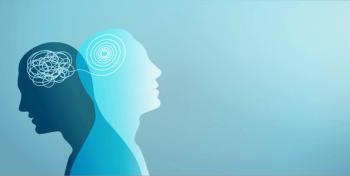
Two Ways to Treat Fatigue in Bipolar and Depression
Ask a patient with depression how long it takes for them to feel fully awake in the morning and you are liable to get some revealing answers.
RESEARCH UPDATE
Ask a patient with depression how long it takes for them to feel fully awake in the morning and you are liable to get some revealing answers. Fatigue is common in depression, and one of the causes of that fatigue is sleep inertia. Sleep inertia is a transitional state between sleep and wakefulness. Sometimes called sleep drunkenness, it is characterized by grogginess, poor mental performance, physical slowing, and dyscoordination.
Most people experience sleep inertia when they awake from deep sleep, but it usually lasts a few minutes. In depression it can drag on for 4 hours. That means a quarter of the day is spent in an impaired state. Sleep inertia perpetuates depression by causing patients to stay in bed too long, disrupting circadian rhythms and furthering inactivity.
Sleep inertia is particularly common in bipolar disorder, where it is
The first is
A less strenuous approach is the
Besides treating sleep inertia, both of these methods have antidepressant effects as well. Allison Harvey’s group at UC-Berkley has developed a version of CBT-insomnia for bipolar disorder called CBT-ib. One of the main modifications was the addition of brisk awakening to the morning routine. Compared with psychoeducation, CBT-ib improved sleep and mood. After 6 months, those who underwent this behavior therapy saw an
Dawn simulators have evidence in winter depression, where small controlled trials have found that they worked better than a placebo but not quite as good as a lightbox.6-8
Getting out of bed in the morning is one of the most important steps in treating depression. It is integral to several psychotherapies: social rhythm therapy, CBT-insomnia, and behavioral activation. For bipolar disorder, those therapies emphasize getting out of bed at the same time-give or take 15 minutes-to stabilize circadian rhythms. Brisk awakening and dawn simulation help patients overcome some of the inertia that keeps patients from starting their day on the right foot.
Dr Aiken is Instructor in Clinical Psychiatry at the Wake Forest University School of Medicine and the Director of the
Disclosures:
Dr Aiken does not accept honoraria from pharmaceutical companies but receives royalties from W.W. Norton & Co. for a book he co-authored with James Phelps, MD,
References:
1. Trotti LM.
2. Ohayon MM, Mahowald MW, Leger D.
3. Hilditch CJ, Dorrian J, Banks S.
4. Kaplan KA, Talavera DC, Harvey AG.
5. Harvey AG, Soehner AM, Kaplan KA, et al.
6. Terman M, Terman JS.
7. Avery DH, Bolte MA, Dager SR, et al.
8. Danilenko KV, Ivanova IA.
Newsletter
Receive trusted psychiatric news, expert analysis, and clinical insights — subscribe today to support your practice and your patients.














